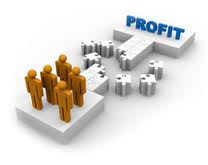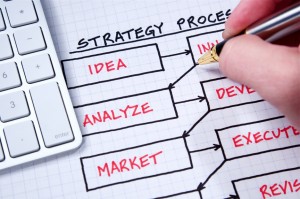Strategic Planning Essentials For Your Business Success
August 15th, 2011 by Diane Conklin under Marketing, Uncategorized. No Comments.
 Strategic planning is essential to the success of any business. You have to look at strategic planning from a global perspective. That means the big picture – not minute details, but, its direction and scope. You start by thinking about your ultimate monetary goals for the year, product development goals, and workshop/teleseminar goals and more importantly, how you’re going to reach those goals.
Strategic planning is essential to the success of any business. You have to look at strategic planning from a global perspective. That means the big picture – not minute details, but, its direction and scope. You start by thinking about your ultimate monetary goals for the year, product development goals, and workshop/teleseminar goals and more importantly, how you’re going to reach those goals.
Then, use backward planning to develop your plan. That means you work with the end result in mind. It’s a road map to get you where you need to go and where you want to go.
Strategic planning is critical to keeping a focus in your business. Again, if you don’t have a plan, and you don’t know where you want to go, most likely you’re not going to get there.
Strategic plans can be long-term plans or shorter term plans, but typically, strategic planning is a longer-term plan. Ideally, you would have your current year plus a minimum of 6 months past that, or 18 months.
If that thought makes you cringe – hold on! Think about your marketing cycles for each of the events you schedule. The further out the events are, just “pencil them in”. A strategic plan is not in set concrete. If you need to change or shift gears – do it! There is a lot of flexibility within your plan.
You will have other plans in place as well. Like your implementation plans and your specific marketing plan for each specific event. So your strategic plan is a global overview of where you want to go and the events that must happen to get there. Your marketing plan will include everything you need to implement, item by item. So the two plans work together, hand-in-hand, to bring you the business result you want.
But, hold on you say! I already have goals & objectives for my business – isn’t that enough? That’s a good start, but you need to take it one step farther.
Just having goals and objectives for your business isn’t quite enough. Everybody has good intentions. Most entrepreneurs have goals – ideas and ideas and ideas. Few are implementers, and don’t really know what it takes to get the job done – they just want it done.
Developing a plan forces the entrepreneur and staff to come together and put some structure to the goals. Action plans, written down, with accountability systems, tend to get done.
So the first step is identifying your business goals and objectives. Your strategic plan is partly how you’re going to reach those goals and objectives.
Here’s an example… Let’s say, your goal is to make $1 million this year. Your next thought should be, how am I going to make it? How many events, coaching groups, products, workshops and seminars do I have to do to get there? What is my marketing budget? How much am I willing to spend on getting a new client? How many staff will be required to accomplish my goals? The answers to these questions are key to making your strategic plan.
So while keeping the end result in mind, you may want to say, if I want to make $1 million this year, I can make $200,000 in seminars as profit. How many seminars am I willing to do? Five would get you there. You decide as the business owner and entrepreneur. You may also have product sales. Your product sales in the year may generate $300,000. Factor that into your plan. Get the picture? Brainstorm and write it down.
You can quickly see that by thinking about your strategic plan with your goals and objectives in mind, you can start to sketch out exactly what it’s going to take to get you where you want to be.
The responsibility of developing your plan lies with you – the business owner and entrepreneur. After all, whose business is it anyway?
If you’re the business owner, it’s critical for you to decide your financial and monetary goals for each business year. You don’t have to share them or delegate that responsibility to anyone because it is solely your decision. Once you have decided your monetary goals and your budgets, and all of those personal business decisions, you take your overall plan to key people in your staff to build out the details.
So the bottom line is, if you’re the business owner, you make the decisions – you are in the driver’s seat – figure out where you’re going and your staff will help you get there.


